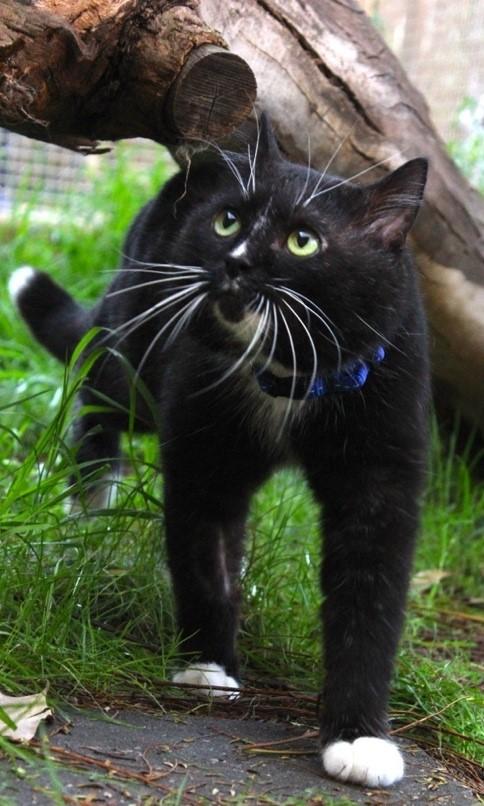
Credit: Dr. Jelena Vukcevic
Emerging infectious diseases comprise a substantial fraction of important human infections, with potentially devastating global health and economic impacts. A 2008 paper in Nature described the emergence of no fewer than 335 infectious diseases in the global human population between 1940 and 2004. In the veterinary field, just as in the medical field, advanced molecular techniques and sophisticated computer-based algorithms for genetic sequence assembly and analysis have revolutionised infectious disease research. They have also raised important questions, as the potential pathogenic role of novel viruses can be difficult to determine.
What is well understood is that novel viruses may contribute to diseases that are major causes of feline morbidity and mortality, including cancer and chronic kidney disease (CKD). A state-of-the-art review article published in the Journal of Feline Medicine and Surgery this month focuses on two novel viruses that have the potential to negatively impact feline health and welfare globally – gammaherpesvirus and morbillivirus. Writing for an international audience of veterinary practitioners and feline researchers, an expert group of feline virologists, clinicians and pathologists from Australia, New Zealand and the USA, led by Dr Julia Beatty, of the University of Sydney, discusses aspects related to virus discovery, epidemiology, pathogenesis, diagnosis, prevention and zoonotic potential.*
For many years, domestic cats were identified as the natural host for just a single herpesvirus, feline herpesvirus 1, which is a common cause of ocular and upper respiratory tract disease. In 2014, a targeted virus discovery programme, prompted by the clinical observation that cats develop the types of cancer that, in humans, are caused by gammaherpesviruses, identified Felis catus gammaherpesvirus 1 (FcaGHV1). The first gammaherpesvirus known to infect domestic cats, FcaGHV1 is widely endemic; studies suggest that cats can be infected from 2 months of age, and that most adult cats are persistently infected. What is not yet known is whether FcaGHV1 has any pathogenic role in cats. Comparative evidence, however, suggests that while gammaherpesvirus infections typically remain subclinical, in certain circumstances, often after many years of infection, they can cause severe and frequently fatal disease. For example, Epstein-Barr virus, a gammaherpesvirus that infects over 90% of adult humans and is usually innocuous, occasionally causes lymphomas, carcinomas and other cancers. Dr Beatty and her coauthors hypothesise that if FcaGHV1 is pathogenic in cats, it is likely that disease would similarly be only a rare outcome of chronic infection, with most infected animals remaining asymptomatic. Given how widely distributed FcaGHV1 is, the total number of potential disease-affected animals could nevertheless be sizeable.
Feline morbillivirus (FeMV) was first reported in domestic cats in Hong Kong and China in 2012, and has since has been detected in Japan, Europe and the Americas. It was named as the seventh species in the genus Morbillivirus, alongside important pathogens of humans and animals such as measles virus and canine distemper virus. Despite a widespread distribution, like FcaGHV1 it is unclear whether FeMV causes disease in cats. Of particular interest to the veterinary community, however, is a tantalising link that has been suggested in several reports between FeMV and tubulointerstitial nephritis, the pathological manifestation of feline CKD. The authors caution though that pathogenesis studies have yet to be performed to definitively assess causation.
While many emerging diseases in humans originate in animals, there is no known zoonotic risk associated with these two viral infections. Limited transmission between felids is known to be possible, at least for gammaherpesviruses, with infection of critically endangered Tsushima leopard cats with FcaGHV1 recently having been identified in Japan.
Technological advances mean that the rate at which novel viruses are being discovered now exceeds our understanding of their clinical relevance. The authors conclude that deciphering the impact of these viruses in cats will require multiple lines of investigation, and the practising veterinarian has an important role to play. Ultimately, the identification of new viral pathogens is not all bad news for cats, as it raises the prospect of improved patient outcomes through specific treatment and, more significantly, disease prevention through viral control measures.
###
Reference
Jones KE, Patel NG, Levy MA, et al. Global trends in emerging infectious diseases. Nature 2008; 451: 990-993.
*Beatty JA, Sharp CR, Duprex WP, et al. Novel feline viruses: emerging significance of gammaherpesvirus and morbillivirus infections J Feline Med Surg 2019; 21: 5¬-11. The article is free to read here.
Notes to editors:
About the Journal of Feline Medicine and Surgery
The Journal of Feline Medicine and Surgery is the official journal of the International Society of Feline Medicine (ISFM) and the American Association of Feline Practitioners (AAFP), and is published by SAGE Publishing.
Media Contact
Margaret Melling
[email protected]
44-017-478-71872
Related Journal Article
http://dx.




